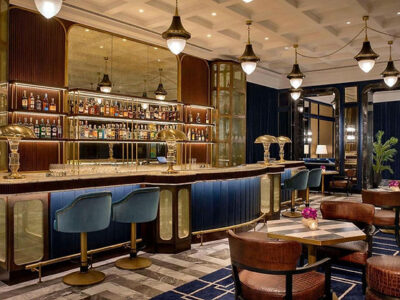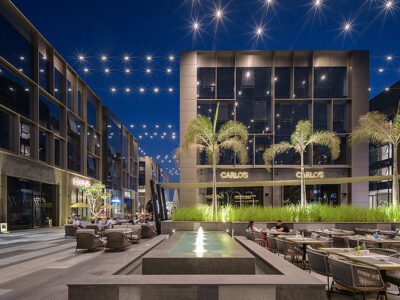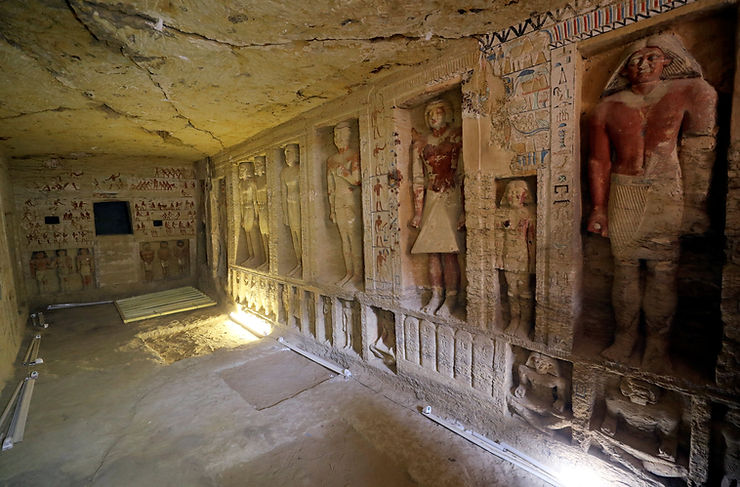
Tomb of Wahty. Photo credit: Mohamed Abdel Ghany/Reuters
No question about it — Egypt is just one of those bucket list countries, with sights that are impossible to fathom unless you see them for yourself. But as we all know, sometimes crossing something off your bucket list is easier said than done!
So whether you’re stuck at home with no travel plans in sight, or are just curious to see some of Egypt’s most famous historical, religious and cultural sites, Egypt’s Ministry of Tourism and Antiquities has done us all a solid and created 3D virtual tours where you can explore these mysterious, intriguing places for free from the comfort of your own home.
Local tip: if the virtual tour page says it’s unable to load the first time, just refresh the page.
King Tut Hall
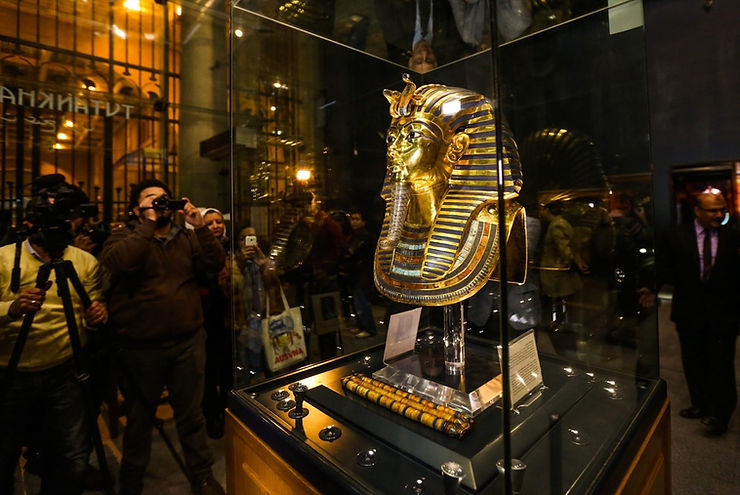
Imagine this but without the crowds.
See the iconic King Tut burial mask in the Cairo Museum’s King Tut Hall, alongside his golden coffins and other treasures from his tomb in the Valley of the Kings.
King Tut Hall virtual tour link.
Museum of Islamic Art
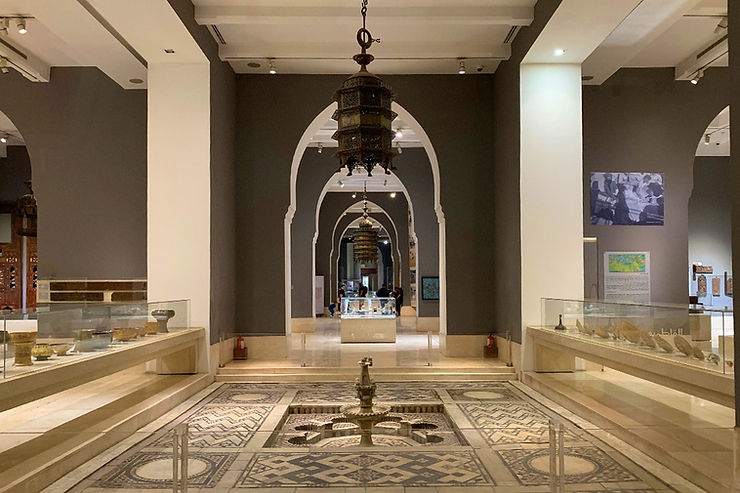
This art museum in Cairo holds over 100,000 pieces of Islamic heritage from not only Egypt but also Arab and non-Arab countries alike.
Many of the pieces were gathered from the first Islamic capitals of Egypt (Fustat and Askar), prior to the rise of Cairo. Pieces were also selected from the Delta, Fayoum, Luxor and Aswan.
Museum of Islamic Art virtual tour link.
Abu Serga Church

The Abu Serga church in Coptic Cairo is believed to be built on the spot where the Holy Family (Joseph, Mary, and infant Jesus Christ) stopped and rested towards the end of their journey to Egypt. The spot is now the crypt of the church, 10 meters deep.
Abu Serga virtul tour link.
Tomb of Ti
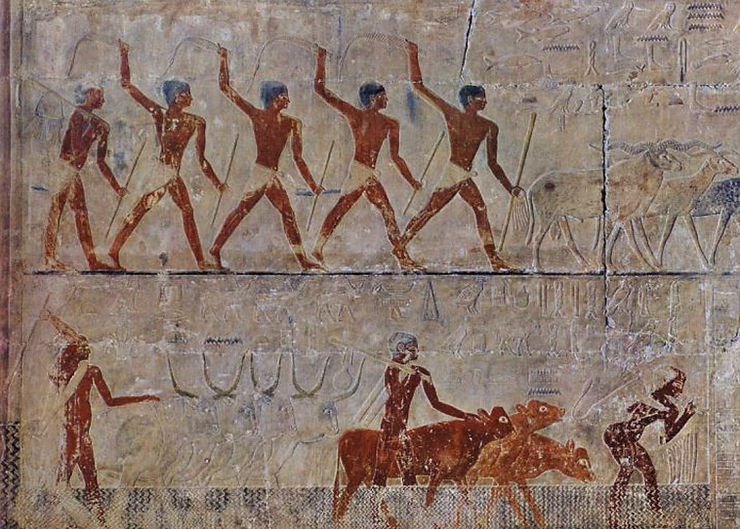
The mastaba tomb of the ancient Egyptian official Ti in the Saqqara necropolis outside of Cairo. Ti’s tomb is known for its wall depictions of daily life in the Old Kingdom, including scenes of farming, boat-building and poultry-fattening.
Tomb of Ti virtual tour link.
Manasterly Palace & Nile Meter
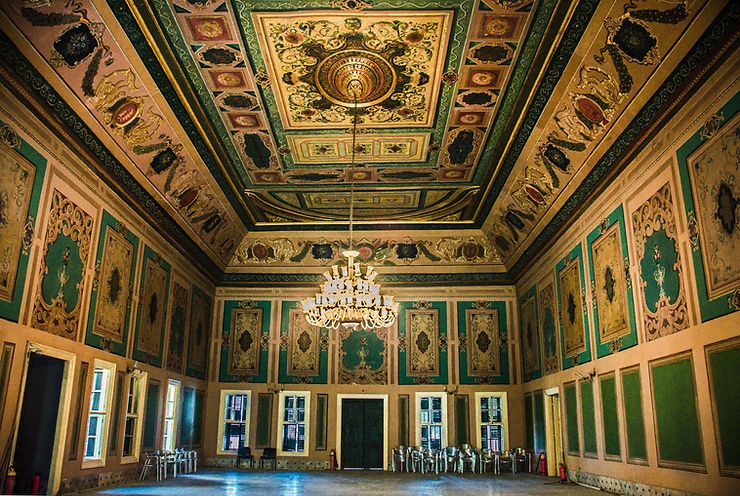
The palace of Hassan Fouad Al Manasterly Pasha, the governor of Cairo in 1854 AD, located on the Nile River island of Al Rawda in Cairo. On the grounds is also a Nilometer built in 1861 AD, to measure the Nile during the annual floods.
Manasterly Palace and Nilometer virtual tour link.
Niankh-Khnum and Khnumhotep Tomb

An unusual ‘double tomb’ mastaba in the Saqqara necropolis. It’s not common to find a tomb for two people, so it’s theorized that these two men were brothers, and perhaps twins (one theory is that they were actually conjoined twins).
Niankh-Khnum and Khnumhotelp’s tomb virtual tour link.
Mohammed Ali Pasha Mosque
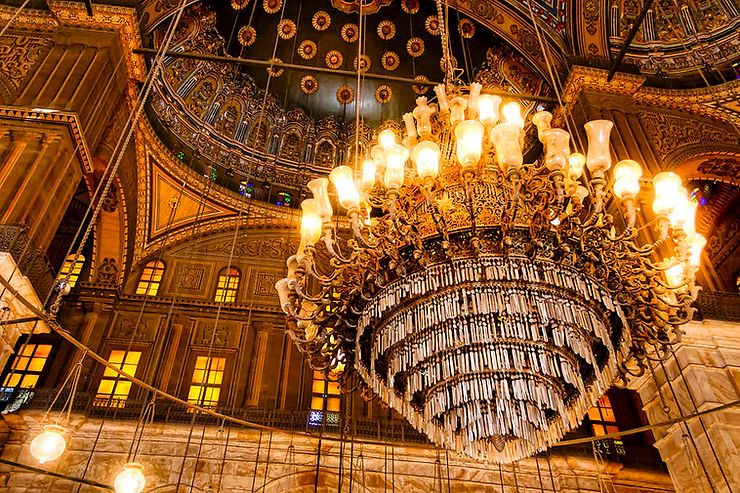
Mohammed Ali Mosque in the Cairo Citadel is one of Cairo’s landmarks and dominates the Eastern skyline, both during the day and then at night when it’s lit up. It was commissioned by Mohammed Ali Pasha, an Ottoman Albanian military commander who became Khedive of Egypt.
Mohamed Ali Mosque virtual tour link.
The Step Pyramid Complex of Djoser – Colonnade
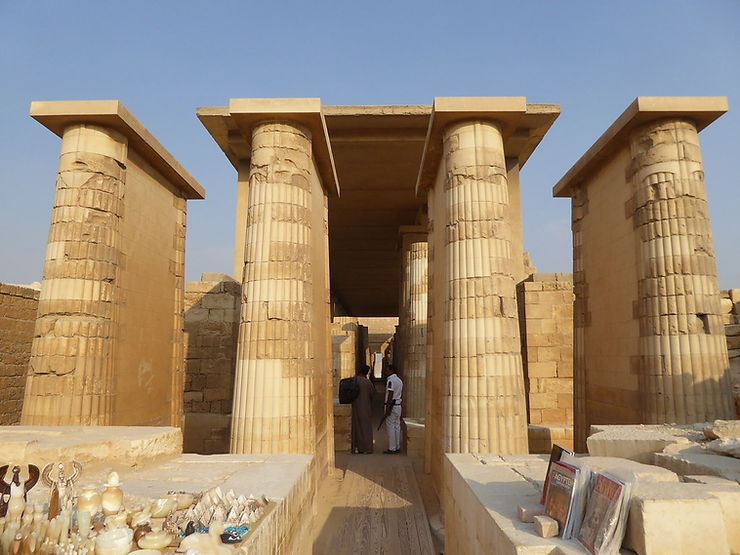
Photo credit: Aidan McRae Thomson
The entrance colonnade to the pyramid complex of Djoser. The oldest Egyptian pyramid to date, ‘The Step Pyramid’ is thought of as the initial prototype for the later smooth-sided pyramids. The colonnade is 20 pairs of columns with 24 small chambers between each, which are thought maybe to represent the nomes of Upper and Lower Egypt, and may have once held statues of the pharaoh or the gods.
Step Pyramid Colonnade virtual tour link here.
Gayer-Andersen Museum
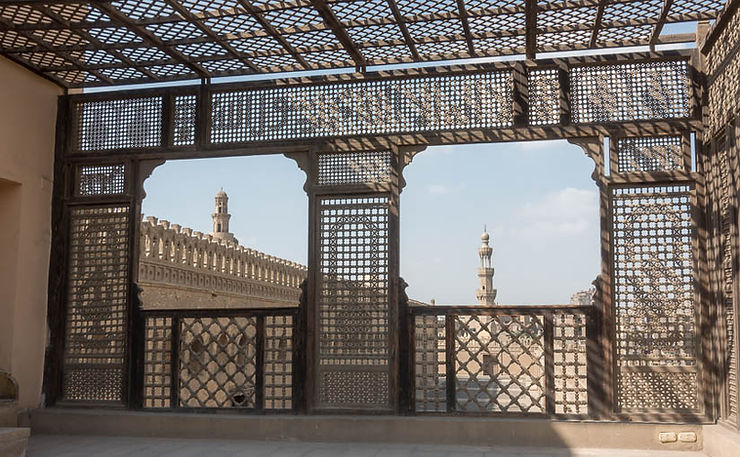
The Gayer-Andersen Museum is found in a beautiful historical house in Old Cairo, built in 1631. It’s a great remnant of Islamic architecture at the time.
The house belonged to several different wealthy families over the years, but gained its name during its stint as home of British officer Gayer Andersen in 1935. He amassed a stunning collection of art, furniture, carpets and Egyptian handicrafts that remain in the house until present day.
Gayer-Andersen virtual tour link.
Unas Pyramid
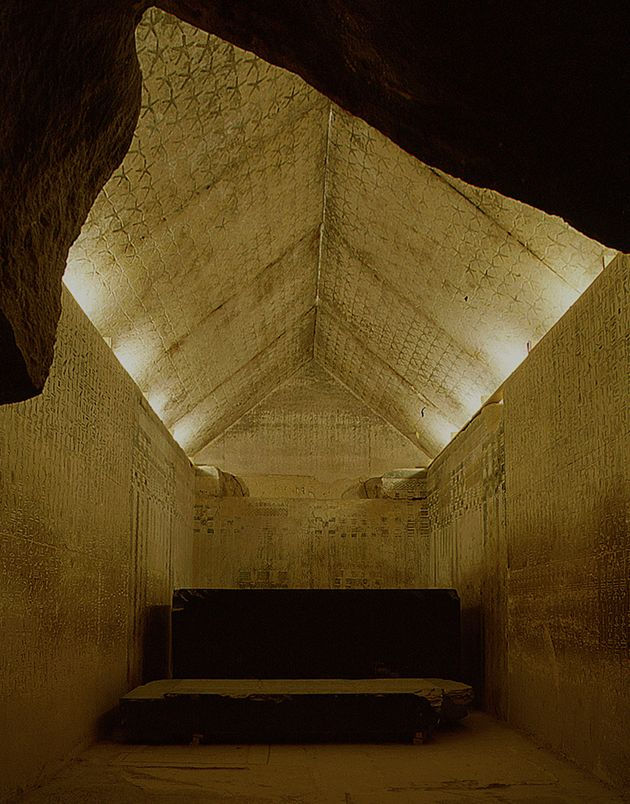
The smallest remaining pyramid of the Old Kingdom, but notable due to the discovery of the ‘Pyramids Texts’ inscribed inside on its walls. The Pyramids Texts were funerary texts and spells for the pharaoh’s afterlife, which would later become the basis of the Book of the Dead.
Unas Pyramid virtual tour link.
Al-Fath Mosque
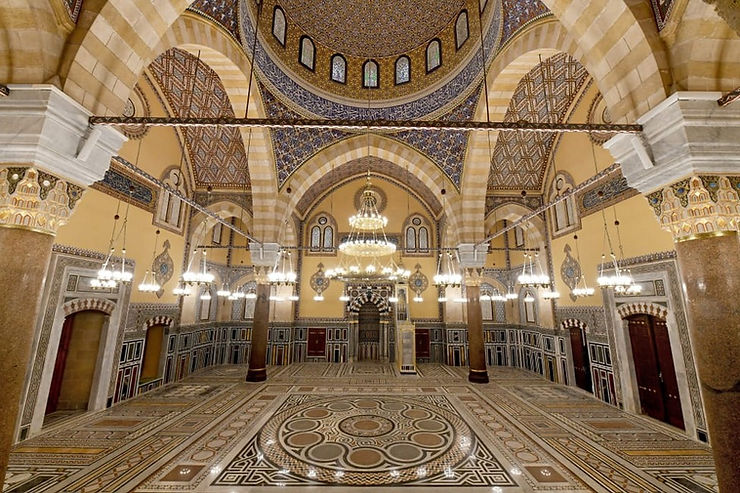
The Royal Al-Fath Mosque is annexed to Abdeen Palace in Cairo, built in the 19th century in an Ottoman style similar to the mosque of Mohammed Ali Pasha.
The Al-Fath Mosque virtual tour link.
Tomb of Menna
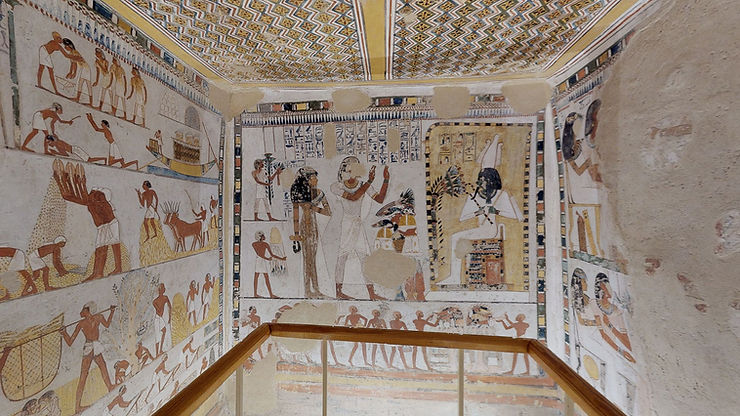
Menna was an ancient Egyptian official, and his tomb is one of the most colorful and best-preserved in Thebes (modern-day Luxor).
Tomb of Menna virtual tour link.
Red Monastery
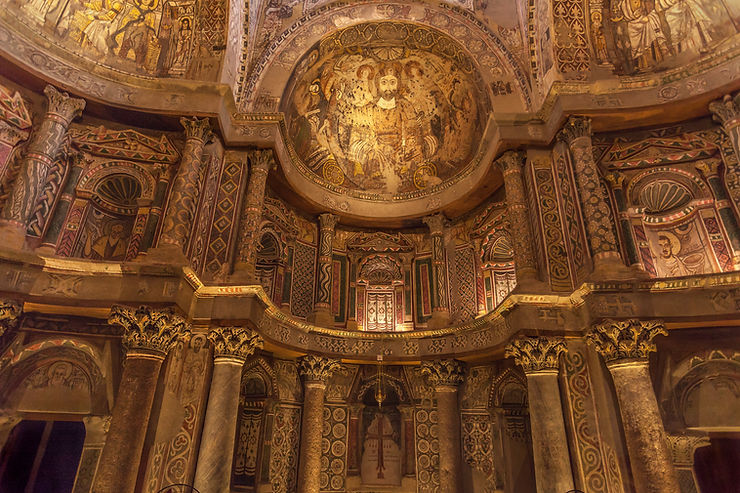
This 1,400 year old Coptic Orthodox church in Sohag was once one of Byzantine Egypt’s most beautiful monasteries. It was in ruins for decades, but was recently restored to its former glory.
Red Monastery virtual tour link.
Mosque-Madrassa of Sultan Barquq
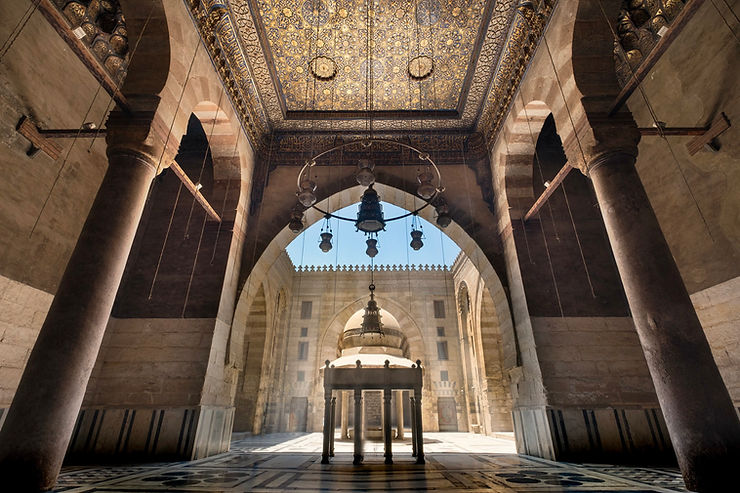
The mosque-madrassa of Al Zaher Barquq (also known as the Sultan Barquq mosque) is a medieval religious complex in the Moez street area in Old Cairo, adjacent to Khan el Khalili (for our full Khan el Khalili guide, head here). It’s comprised of a mosque, madrassa, mausoleum and khanqah (a building for Sufi spiritual retreat).
Mosque-Madrassa of Sultan Barquq virtual tour link.
Tomb of Queen Meresankh III

Photo credit: The Giza Project at Harvard University
Meresankh III was the granddaughter of Khufu (the pharaoh who built the Great Pyramid), and is believed to be the wife of either Khafre or Menkaure (the pharaohs of the other two Pyramids of Giza). One of the most beloved features of her mastaba tomb is the ten large statues of women that are carved out of the northern wall, thought to represent Meresankh III, her mother and her daughters.
Tomb of Meresankh III virtual tour link.
Ben Ezra Synagogue

Originally a Coptic Church established in 882 AD, Abraham Ben Ezra from Jerusalem bought the church and converted it to a synagogue. It’s believed to be the spot where the baby Moses was found.
The synagogue went through a series of renovations over the centuries, with the current structure dating back to 1892. It’s built in the style of a basilica, with two floors: the first floor dedicated to men, and the 2nd dedicated to women. It now functions as a museum.
Ben Ezra Synagogue virtual tour link.
Beni Hasan

A necropolis dedicated to ancient military leaders and provincial rulers, today found in the modern city of Minya in Upper Egypt. There are about 39 tombs dating back to the Middle Kingdom (2050 BC to 1710 BC).
Beni Hasan virtual tour link.
Catacombs of Kom el Shoqafa
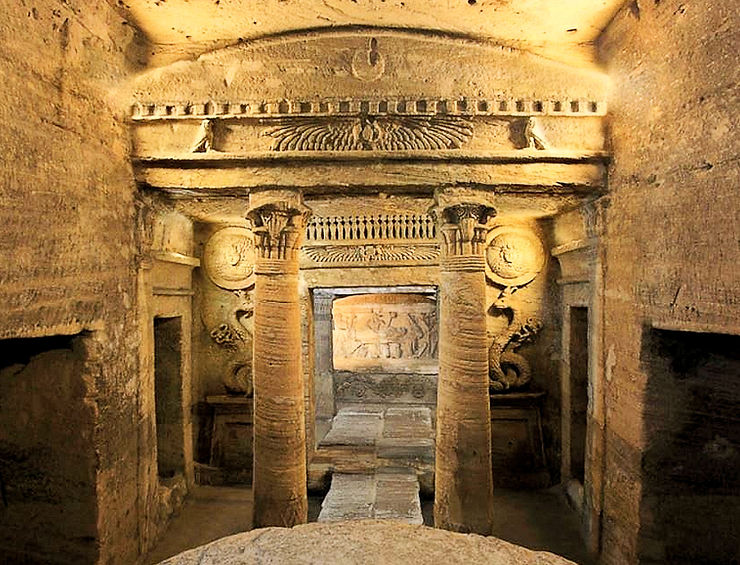
These catacombs in Alexandria are a rare mix of Egyptian, Greek and Roman architecture and monuments and are considered one of the Seven Wonders of the Middle Ages.
Catacombs of Kom el Shoqafa virtual tour link.
Tomb of Ramses VI

Also known as KV9, this tomb (originally built by Ramses V but used by Ramses VI) is one of the best-preserved in the Valley of the Kings in Luxor.
Tomb of Ramses VI virtual tour link.
Coptic Museum
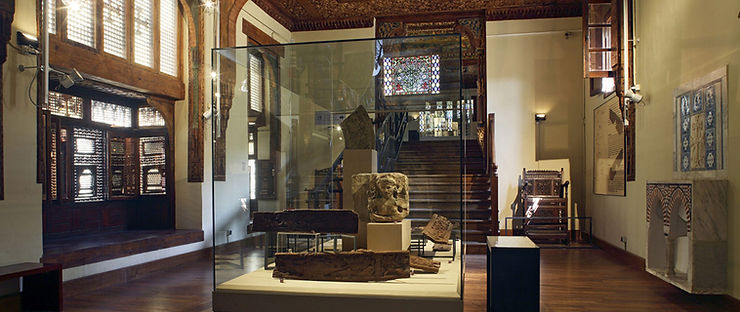
Known as the best place to learn about Coptic history in Egypt, this museum hosts over 1,600 pieces, dating back to the early days of Coptic Christianity in the 3rd and 4th century AD.
This museum is known for its Bibles written in the 11th and 13th centuries in both Arabic and the Coptic language on deerskin, as well as Christian writings on papyrus dating back to the 6th century.
Coptic Museum virtual tour link.
Tomb of Wahty
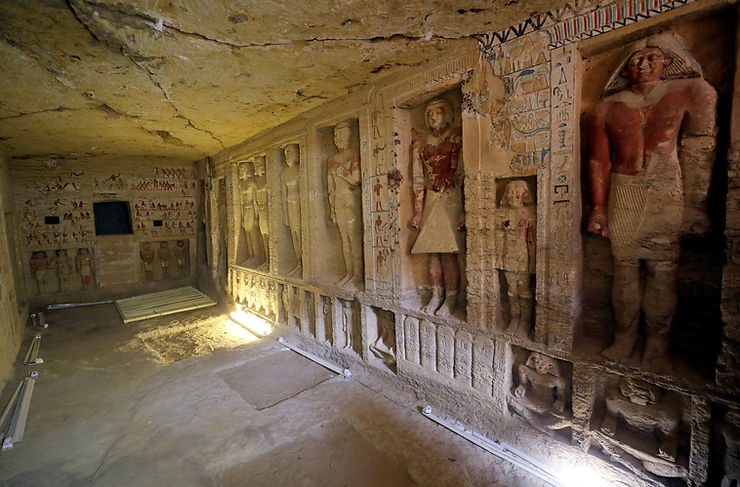
Photo credit: Mohamed Abdel Ghany/Reuters
Recently discovered in 2018, Wahty (also spelled Wahtye) was an Old Kingdom priest and royal official, and his 4,400 year old tomb was found mainly intact in the Saqqara necropolis.
Tomb of Wahty virtual tour link.
Tomb of Mehu

Not far from the Pyramid of Unas in Saqqara is the Old Kingdom mastaba tomb of Mehu, a royal vizier.
Tomb of Mehu virtual tour link.
You may also like: Ancient Egypt Bucket List: 20 Must-See Ancient Egyptian Sites

